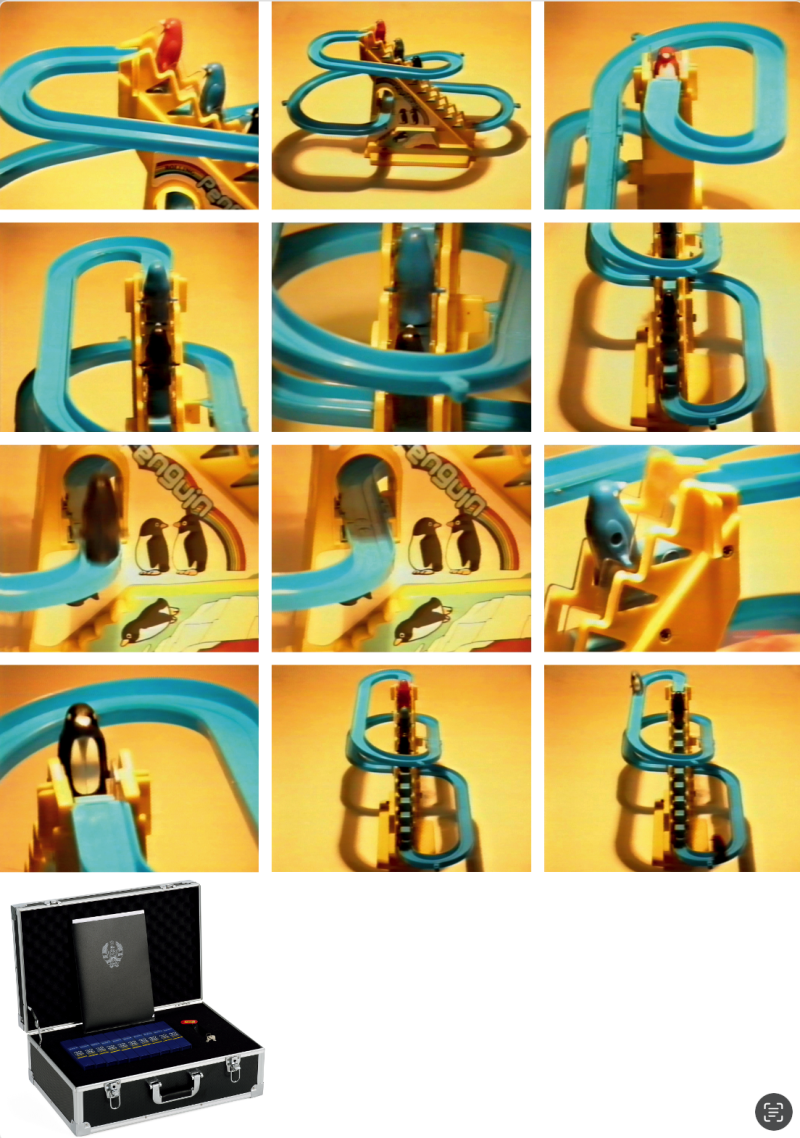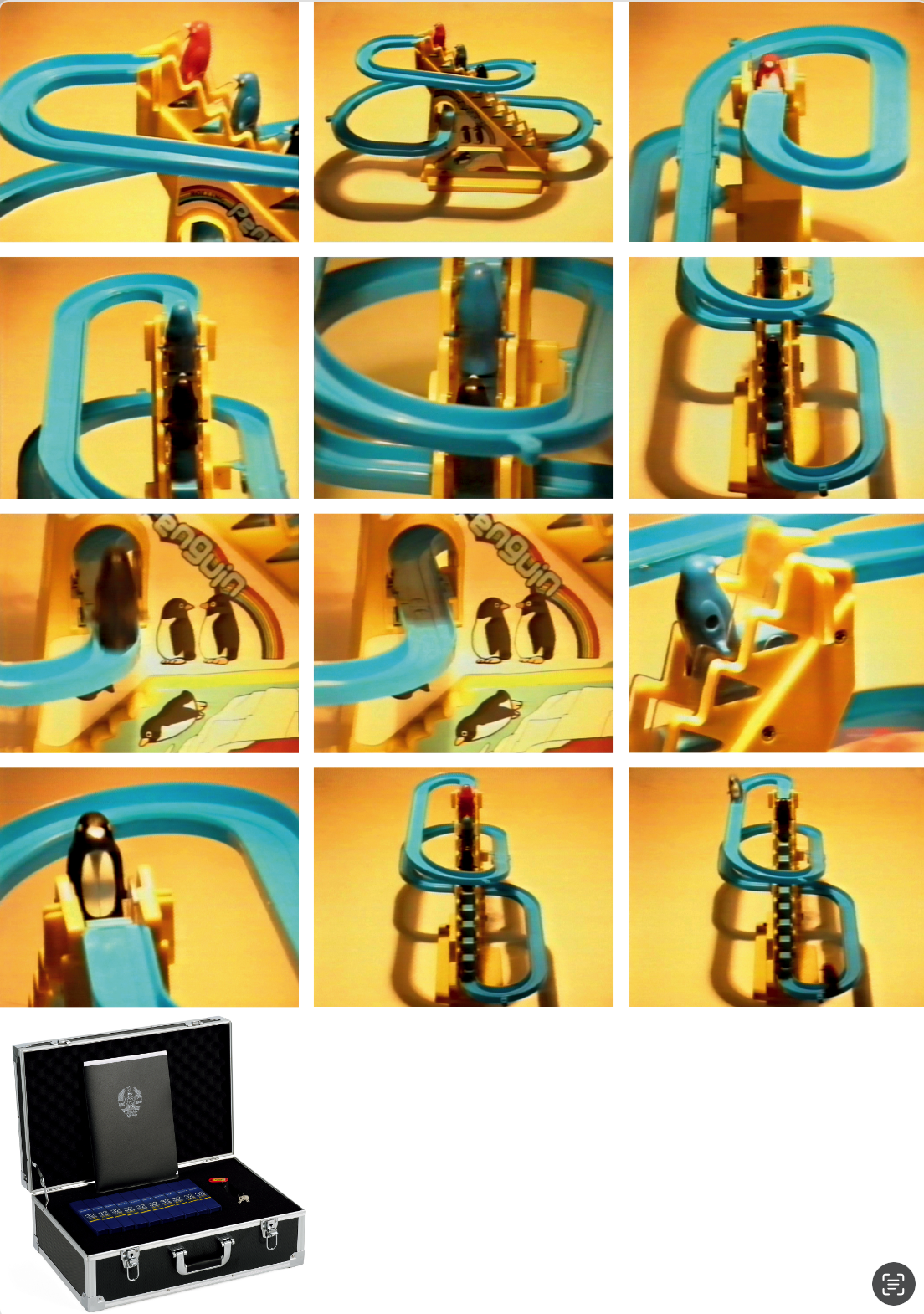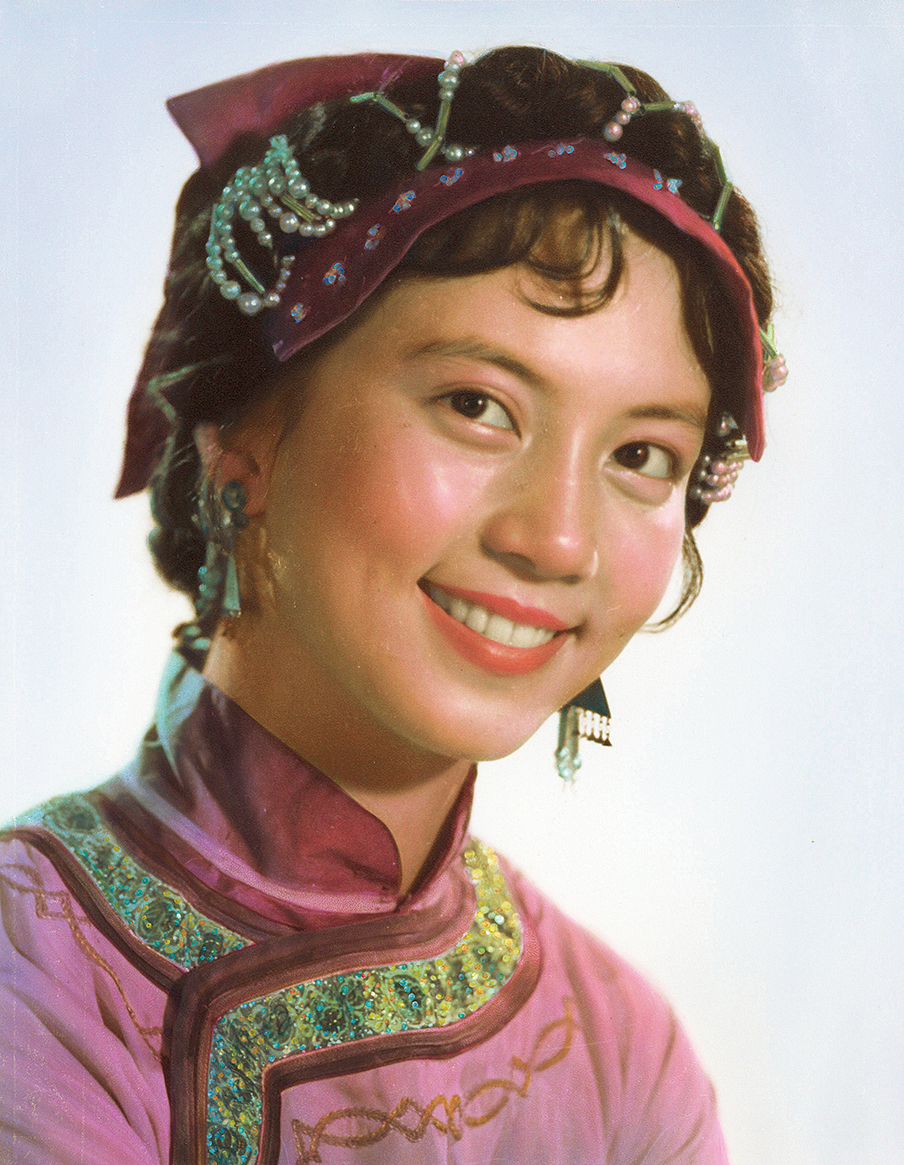
Zhang Peili
Children’s Playground
1992
10-Screen Video Installation
Zhang Peili was born in 1957 in Hangzhou and graduated from the Oil Painting Department of the Zhejiang Academy of Fine Arts (now the China Academy of Art) in 1984. He first gained recognition through painting before shifting his focus to new media art. As a core member of the ’85 New Wave, Zhang co-founded the avant-garde art collective Pond Society with Geng Jianyi in 1986. In 1988, he created 30×30, the first video art piece in China. His works explore themes of bodily experience and individual identity, using video, installation, and other media to examine the relationship between individuals and social systems. In 2003, Zhang established the New Media Department at the China Academy of Art, significantly advancing the emergence and development of new media art education in China.
In Children’s Playground, Zhang Peili employs a multi-perspective approach to capture the motion of a rotating plastic electric toy. On an automated slide, three penguins—red, black, and blue—continuously ascend a staircase before sliding back down, repeating the cycle endlessly. Repetition, framing, editing, and objectivity—these interwoven elements shaped the emergence of media consciousness in China’s video art experiments of the 1990s, defining a typical characteristic of video art from that era. According to the artist’s vision, Children’s Playground must always be displayed using cathode-ray tube monitors, regardless of the exhibition period, and the monitors must be arranged with varying distances between them, facing different directions. Each monitor is also equipped with an individual speaker, producing a layered reverberating soundscape. In this sense, Children’s Playground is not merely a 10-screen video installation but rather a “video sculpture”—a work that occupies a physical space and attempts to engage multiple viewer senses.



